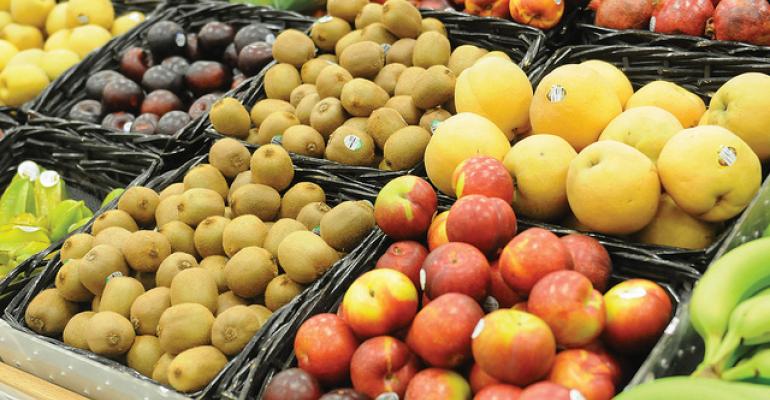Brian Stapleton is the vice president of food and beverage at Aramark and an International Association of Conference Centers board member, but he started his career as a sous chef back in 1985 and worked at various hotels, including a Ritz-Carlton. At Aramark, he oversees menu development and enhancing the customer dining experience, which for Stapleton starts at the beginning of the food procurement chain. Stapleton says, “I love going to farms, I grew up on one in Elk Grove, Calif, so I always go to the distributor’s warehouse and ask where the produce comes from so I can visit.”
When Stapleton was growing up, Elk Grove was a small town with one four-way-stop and some railroad tracks. He says, “Everyone grew vegetables in their gardens. I worked in an orchard there and I remember coming home from school and pulling a carrot out of the ground and wiping the soil off and eating it. We raised cattle and had the greatest food. I thought everyone had that.”
The Procurement Path
So Stapleton appreciates the current food obsession, even if it means catering to a wide variety of different diets and needs. “At events, there are a lot of people there for the food experience, as well as people with the low cholesterol and gluten-free, etc., diets, so we need to cater for them all without compromising on taste and variety. If you are using incredible products with the correct procurement, you can meet most needs.” One of the ways Stapleton ensures he knows the path food takes from farm to table is to create partnerships with local distributors who have access to lots of small farms, give them menus, and tell them the volume Aramark has needed in the past and can expect to need in the future. There is an additional cost to locally grown food, but creating efficiencies by using distributors can keep it affordable. FreshPoint is one of the distributors Aramark uses, but it has many others in different parts of the country. He says, “Procurement is getting better. There are now local distributors and it is pretty easy to manage. We have to provide locally grown produce monitored for pesticides and support local farmers, so whenever we take on a new property I am out in the marketplace finding those distributors.”
What Is That and Where’s It From?
Although Stapleton doesn’t get to cook professionally anymore, he loves talking about food. “Let’s face it, everyone is passionate about food now, especially meeting planners.” There are two recurring themes planners have found their attendees like. The first is information about meals: what’s in them and where the ingredients come from. While “surf and turf” seems to have gone out of fashion, Stapleton says it is probably still on the menu but will have a different description. “Dry-aged beef and wild-caught Alaskan Salmon, for example, and attendees want to know if the food was grown responsibly and if the beef was grass fed or the fish was farmed.”
The other thing planners are excited about is how the food relates to the culture of the location. Stapleton says, “There are a lot of regional cooking techniques that can be used, even if an attendee is vegan or has other dietary restrictions. For example, my wife is from the South and I have spent a lot of time talking to her mother and grandmother about food. In the South, they use iron skillets, which have higher heat retention, so flavors stay more intense.” One example he gives is cooking mushrooms. “Sautéing mushrooms in a pumpkinseed oil at high temperature will caramelize them. A dry sear will cook the mushroom in its own juices and will create a different flavor.”
Sustainable and Snap-Worthy
Stapleton is concerned about two more F&B trends: sustainability and a desire for social media-ready food. Sustainability is a high priority at Aramark. Stapleton says in many places he has worked it was the norm to cook 10 percent over the expected amount, but at Aramark, the goal is to work towards zero food waste.
“For us it is a way of doing business. We are not there yet at every property, but we have the methodology and we work towards that goal every day. It all comes down to better communication with planners and clients.”
As far as presenting every meal or dessert for Instagram, Stapleton says, “I want the food to be creative and for people to remember it, but it has to taste good. After a couple of long meetings your attendees are REALLY looking forward to lunch, and it is an opportunity for the chef to delight and educate them. If you can’t do that, pack up your spatulas and go home.”




